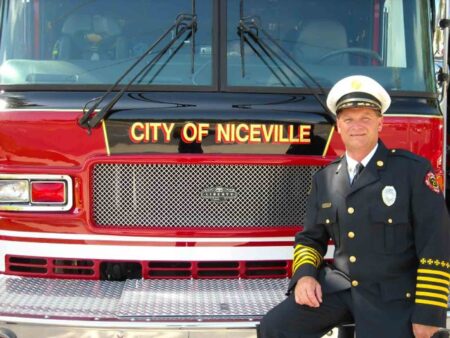NICEVILLE, Fla — In 2021, having electricity in our homes may be taken for granted. But did you know that the UF/IFAS Extension Office played a major role in getting electricity out to rural areas in Okaloosa County?
In 2001, John Hentz, Jr. shared with me his involvement in getting electricity to rural areas in Okaloosa and Walton Counties back in 1940.

Hentz became the County Agricultural Agent in Okaloosa County in 1940. He described Okaloosa as an “agricultural county” with the only paved roads being Highway 90 through the center of the county, Highway 98 “skirting the coast,” Highway 20 through Niceville and Valparaiso, a paved road from Crestview to Laurel Hill and a paved road through Baker into Blackmon. All other roads were dirt.
Hentz explained that Crestview, Milligan, Baker, Laurel Hill, Niceville, Valparaiso and Fort Walton Beach had electricity furnished by Gulf Power but the “smaller villages” and rural areas had no electrical service.
During this time, Rural Electric was just beginning to get started around the country through the federal Rural Electrification Administration (REA) during the Roosevelt administration. The REA was created to bring electricity to farms. Nearly ninety percent of farms lacked electricity due to the excessive costs to get it to rural areas.
As a County Agent, Hentz recognized the need and value for rural areas to have electricity. With help from a few residents near Holt, Hentz arranged a public meeting at the “Holt school house” and invited John Hudson, County Agent in Santa Rosa County, as speaker to explain the REA plan and its operation, as Santa Rosa already had electricity through the REA. Hentz said that the school auditorium was packed. He continued with this project in Baker, Blackmon, Escambia Farms, Laurel Hill and Svea, holding public meetings in local schools and churches.
Once organized, REA officials from Washington took over. Hentz said that they sent a young engineer from Atlanta to map the project using his car’s odometer, locating each applicant. Hentz stated, “I rode every mile of it with him and identified every applicant.”
As with any project, there were challenges and resistance. Hentz remembered one farmer who didn’t want anything to do with this “newfangled” electricity that could “burn his barn down.” In one community, Hentz was accused of running some sort of “scheme” to get money. And, there was resistance to obtaining right-of-way by some property owners to run the electrical lines, etc.
Now known as Choctawhatchee Electric Cooperative, CHELCO now serves more than 56,000 accounts, providing electrical service to rural areas in Walton, Okaloosa, Holmes and Santa Rosa counties.
Hentz stated, “The Choctawhatchee project became a reality and it changed people’s way of life in the outlying rural areas. With the coming of Rural Electricity, people could live in the country and have most of the comforts of town living. The Choctawhatchee Electric Coop was in full operation by late summer of 1941.”
Larry Williams is the Extension horticulture agent with the Okaloosa County Cooperative Extension Service, University of Florida. Contact Larry at 689-5850 or email lwilliams@myokaloosa.com.





